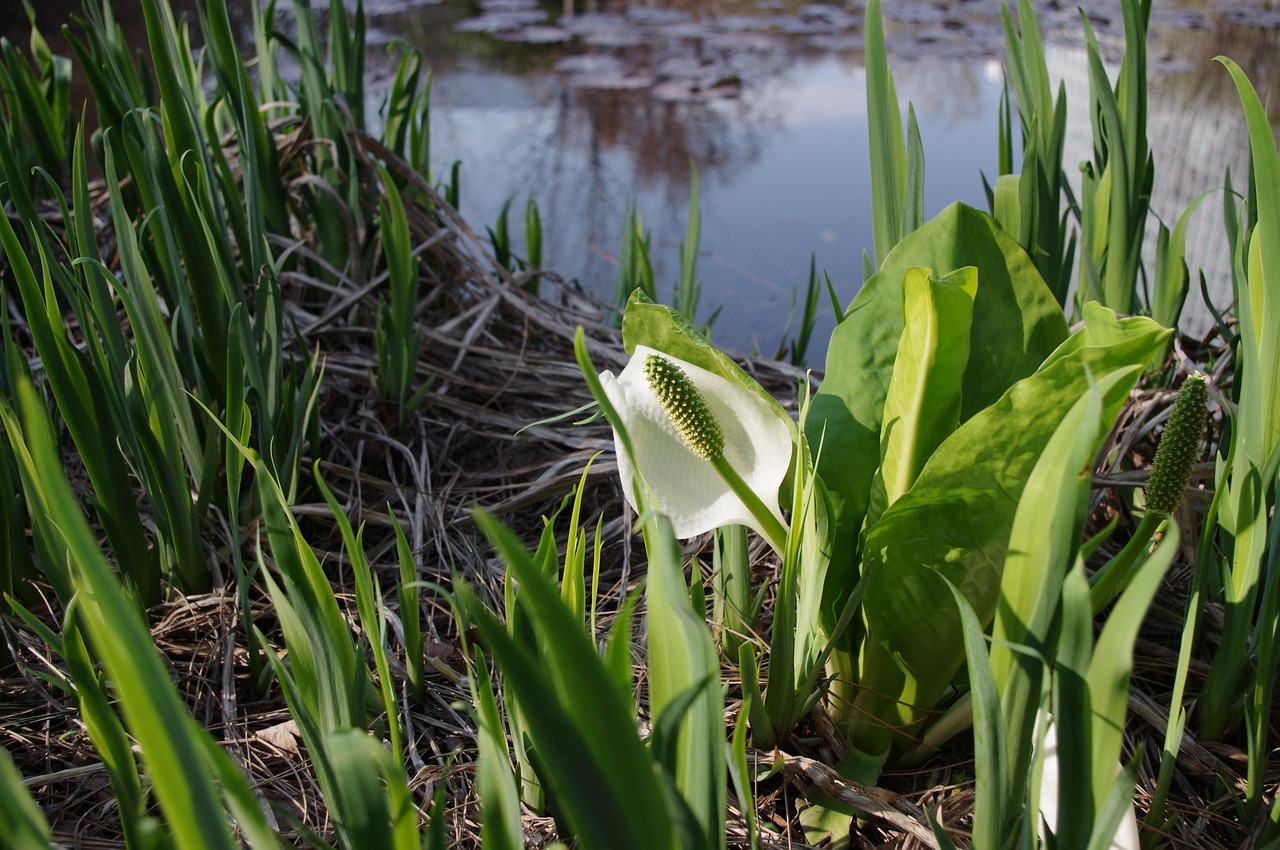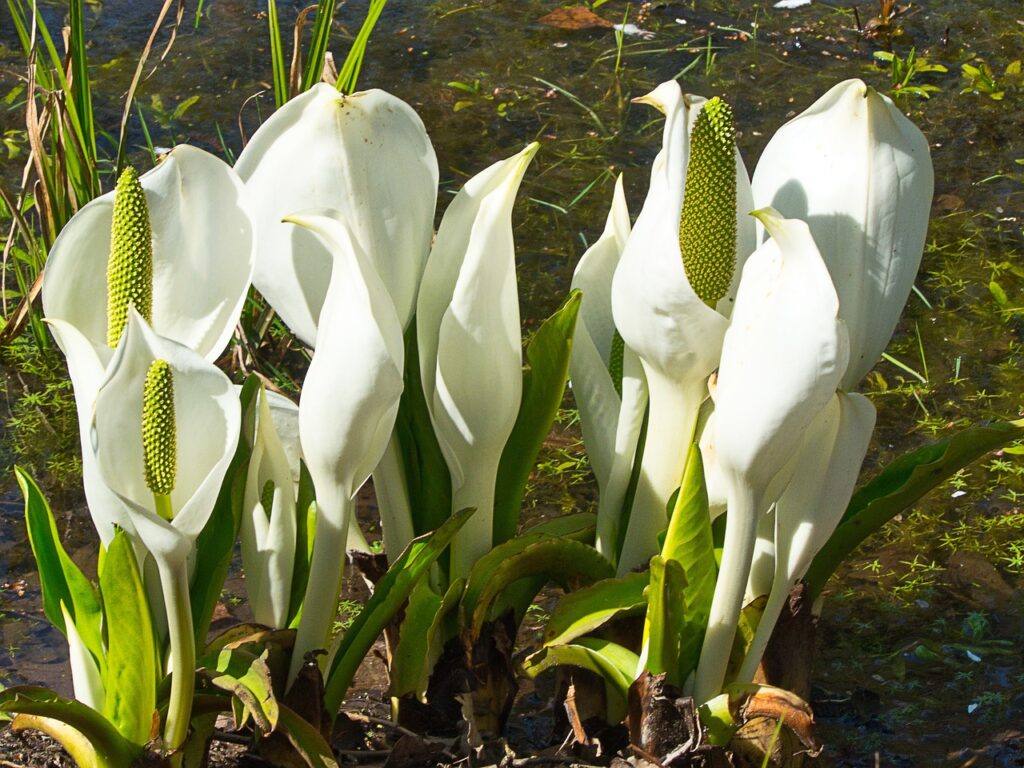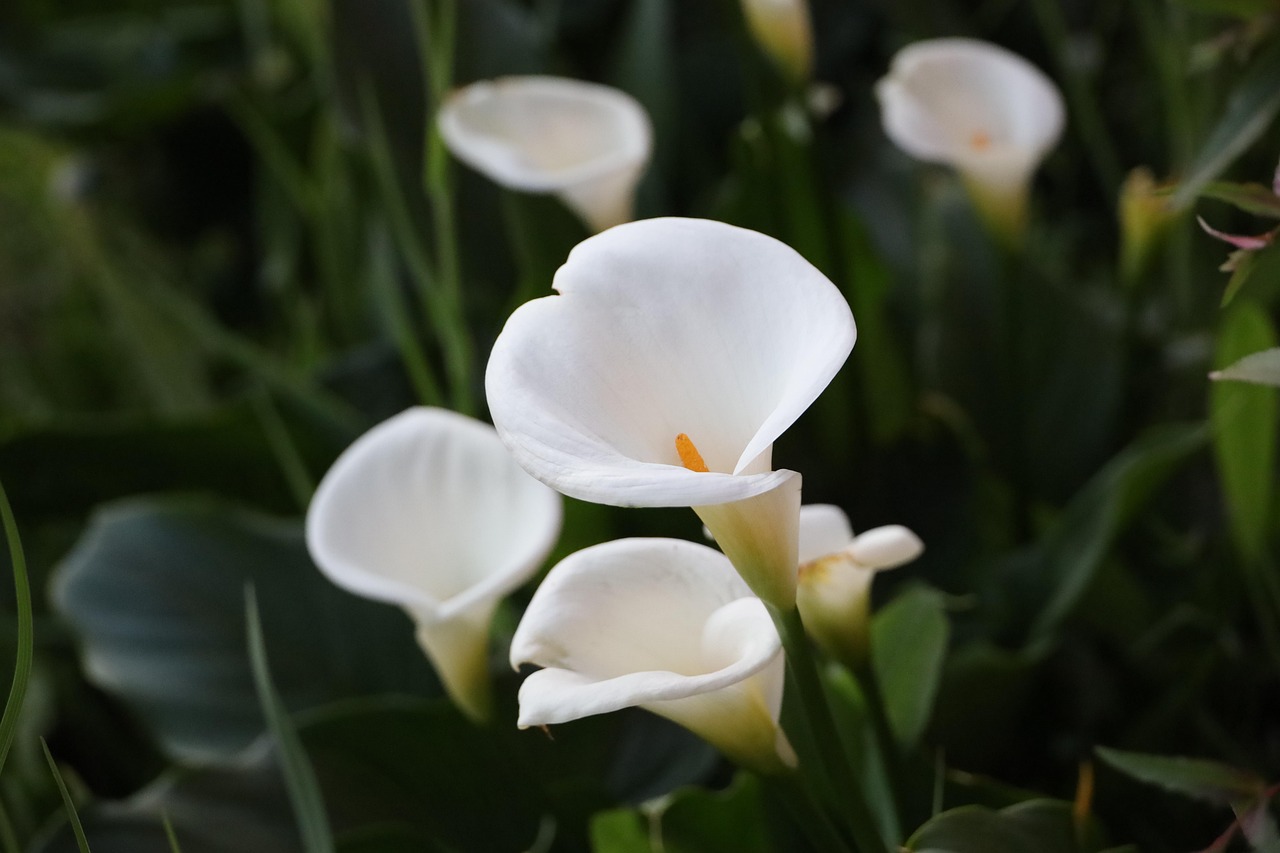Mizubashō | A Symbol of Spring Quietly Blooming in Northern Wetlands

Mizubashō (Lysichiton camtschatcensis) is a distinctive plant that thrives in wetlands, characterized by its white spathes and vibrant green leaves. In Japan, it is widely known as a symbol of spring and is cherished for its unique elegance.
In this article, I will provide detailed information on Mizubashō, including its basic characteristics, cultural and historical background, and tips for cultivation.
Basic Information
- Scientific name: Lysichiton camtschatcensis
- Family: Araceae
- Native habitat: Northern Japan (Hokkaido, northern Honshu) and cold regions of East Asia
- Appearance: Mizubashō grows to about 30–50 cm in height. Its large green leaves and white spathes, which resemble petals, are particularly striking. The true flowers bloom on the spadix in the center of the spathe.
- Blooming season: March to May. It decorates wetlands as the snow melts, heralding the arrival of spring.
Cultural Significance Around the World
In Japan, Mizubashō holds a special place as a symbol of spring.
The vast colonies blooming in the wetlands of Oze (Gunma, Niigata, and Fukushima prefectures) are especially famous and attract many visitors.
The flower also frequently appears in haiku and tanka poetry, often depicted as a symbol of serene beauty.
Related species also grow in the northwestern United States and eastern Russia, where they are seen as emblematic plants of wetland landscapes. However, unlike in Japan, they are usually valued more as part of the natural ecosystem than for ornamental purposes.
Historical Episodes

Mizubashō became widely known in Japan after Oze was designated as a national park in 1934.
Through conservation efforts and tourism development, its scenic presence gained nationwide recognition.
Since the Taishō era, poets and painters have also taken inspiration from this flower, further raising its cultural significance.
In Ainu culture, Mizubashō was revered as part of wetland vegetation within a broader tradition of nature worship. For the Ainu, wetlands symbolized life itself, and Mizubashō represented harmony within nature.
Gardening Advice
When cultivating Mizubashō, it is essential to recreate wetland conditions. Here are the main points to consider:
Sunlight
Prefers partial shade. Avoid direct sunlight; under trees or in bright shade is ideal.
Watering
As a wetland plant, it requires constant moisture. For potted plants, keep water at the bottom of the pot.
Soil
Thrives in moist, muddy soil. Specialized wetland soil or peat moss works well.
Fertilizer
Apply organic or balanced fertilizer sparingly to maintain healthy growth.
Wintering
Although hardy, potted plants should be protected from cold winds during winter.
Conclusion
Mizubashō is a wetland plant that heralds the arrival of spring with its striking contrast of white spathes and green leaves.
Best grown in moist environments, it adds a unique beauty to gardens and watersides.
Deeply rooted in Japanese culture and history, Mizubashō is an ideal choice for creating a garden that celebrates the seasons.


